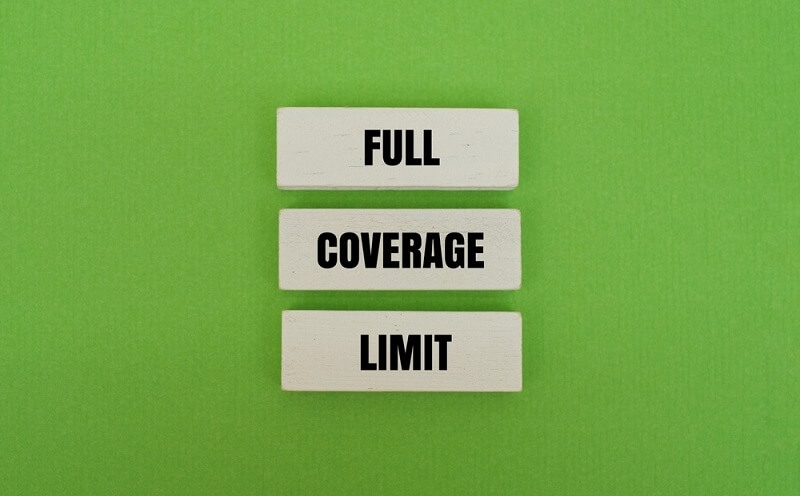
Coverage limits determine the extent of help an insurance plan provides when trouble arises. Many folks try to understand coverage limits but get stuck on confusing terms early on. Here's the thing: when ideas like insurance policy exclusions, maximum coverage explained, and coverage minimums get broken into small steps, everything feels way easier. What this really means is that every plan has rules that determine how much money is paid and when it stops.
Coverage limits determine how far an insurance company will go before the plan's coverage is exhausted. The first steps involve learning how maximum coverage explained works and what limit increase strategies might help someone get safer levels of protection without spending too much.
Coverage limits determine the highest amount a policy will pay in the event of a loss or claim. When the limit is reached, the remaining balance falls to the person. This is why many people try to set boundaries that feel safe without increasing the monthly cost too high. Coverage minimums represent the lowest amount a plan allows, but sometimes these minimums do not provide sufficient assistance during a significant loss.
Many situations show why proper limits matter:
Here's the thing: Smaller limits save money at first, but they also put more risk on the person. Bigger limits cost extra but can prevent enormous stress after an accident.
Insurance policy exclusions show what a plan does not cover. These exclusions help the insurance company set boundaries around protection. Understanding these rules early helps a person avoid surprises during a claim. Most plans include exclusions to protect against events that could be too costly or fall outside the policy's intended purpose.
Common exclusions include:
Insurance policy exclusions matter because limits only apply to things the policy actually covers. Many people read these sections closely before picking their coverage limits so they know where their protection begins and ends.

Maximum coverage explained means knowing the highest amount a plan will pay for a single event or for the entire year. This idea shows the full strength of the insurance plan. When people understand this, choosing between high limits and low limits becomes easier.
Some policies have:
Here's the thing: maximum coverage explained helps people understand how far their protection extends in the event of significant losses. This matters a lot during storms, medical emergencies, or lawsuits.
Coverage minimums represent the lowest amount a person is required to have, based on state rules or company policy. These minimums create entry-level protection. They help stay legal or keep a plan active, but they may not provide sufficient assistance for significant losses.
Coverage minimums often apply to:
Many people start with coverage minimums but quickly notice they don’t match real-life costs. That's why checking limits, reviewing exclusions, and understanding coverage caps help build a safer plan.
Understanding coverage caps helps people know when the insurance company stops paying. A cap is the top limit for a claim. When the cost exceeds that number, the policy stops covering the remainder.
Coverage caps show up in:
What this really means is that caps keep insurance companies from covering unlimited losses. People who read these caps early can increase limits or add extra riders before trouble hits.
Limit increase strategies help people add more protection without incurring excessive costs. These strategies are often featured in many guides because raising limits can make a significant difference in real emergencies.
Simple strategies include:
Many people use these limit increase strategies when their income changes or new risks show up. Here’s the thing: small increases reduce surprises later.
Coverage limits shift depending on lifestyle. A bigger home needs larger limits for repairs. A new car often needs higher protection than an old one. Even age can change limits because different stages of life come with other risks.
These factors affect limits:
Limits should follow the person, not the other way around. Understanding this helps people adjust their coverage minimums and caps as their lives progress.
Many people forget that limits can lose power over time. Prices rise, repair costs increase, and medical bills escalate. A limit that once felt safe may no longer be sufficient today. That’s why yearly reviews help keep protection strong.
During reviews, people check:
Minor updates can often make a significant difference during a claim.
Many people make mistakes because insurance can be confusing. A few slipups show up again and again.
Mistakes include:
These mistakes can leave anyone with surprise bills. Let’s break it down: choosing better limits protects long-term finances more than anything.
Matching limits to risks helps people avoid over-protection. This requires some thought, but it saves a lot of trouble in the long run.
Helpful steps include:
This process ensures that coverage limits are balanced with the realities of everyday life.
Deductibles and limits work together. A higher deductible lowers the bill but raises the out-of-pocket cost during a claim. A lower deductible makes claims easier, but it also increases the monthly premium.
People often choose:
What this really means is deductibles and limits must fit together for strong protection.
Coverage limits determine the extent of help an insurance plan provides and how well someone remains protected in the event of an accident or other unforeseen circumstances. Learning about exclusions, caps, minimums, and strategies helps build smarter protection. Minor changes to limits often prevent considerable stress later, making insurance easier to trust and use.
This content was created by AI